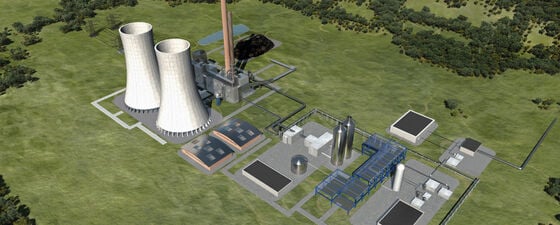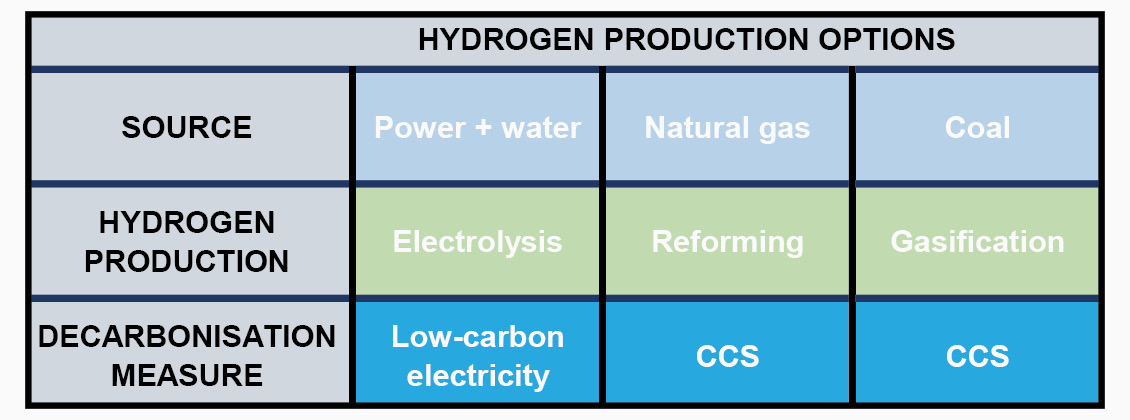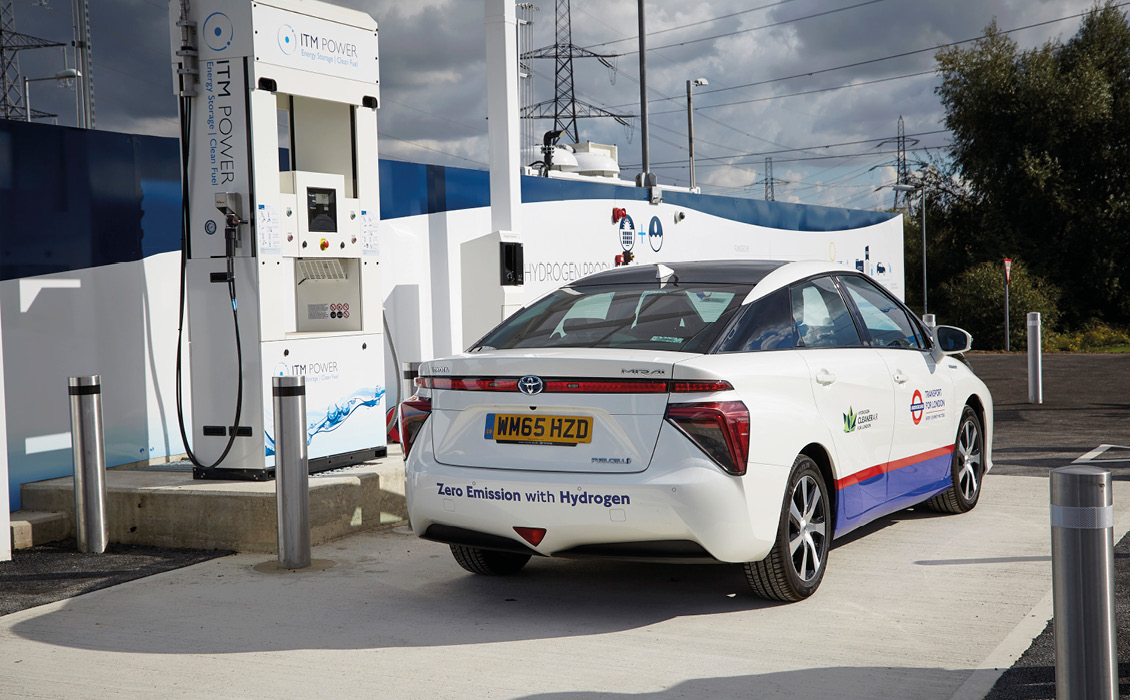Hydrogen as a clean energy source and carrier has rapidly moved centre stage in recent years. It is estimated to comprise 75% of all mass in the universe and has the highest chemical energy content, by mass, of all gaseous and liquid fuels. It is abundant everywhere on Earth and there are a number of ways in which hydrogen can be both produced and used with a low carbon footprint, with few detrimental environmental consequences such as pollution or climate warming emissions.
However, on Earth hydrogen occurs naturally only as a compound, predominantly in water, but also in hydrocarbons, so in order to be used it needs to be released from its bonds with other chemical elements like oxygen and carbon. This requires energy – and how to do that safely, in a cost-effective way that does not increase CO₂ and other emissions, is the crux of the issue.
Yellow, Blue and Green Hydrogen
Hydrogen can be produced in a variety of ways and from a number of sources, dependent partly on the final application, but increasingly with reference to the associated carbon footprint. Most of the hydrogen made today is used in the petroleum refining process or as one of the main chemical ingredients in fertilisers.
At the moment, the most common method of making hydrogen is by using natural gas and a technique called steam methane reformation. This combines methane from gas with water at very high temperatures (approximately 900°C) to produce a mix of carbon monoxide, carbon dioxide and hydrogen. By controlling the amount of air, water and methane in the reaction, it is possible to change the amount of energy required and the waste gases produced. Hydrogen produced in this manner has a carbon footprint of about 10–12 kg CO₂e per kilogram of hydrogen, unless carbon capture and storage (CCS) is used to dispose of the CO₂.
Another method of obtaining hydrogen is to use electricity to split water into hydrogen and oxygen through electrolysis, the water typically heated to between 20° and 100°C. This technique is capable of producing hydrogen at a range of scales and uses, from small electric car refuelling stations to major offshore electrolysis projects. Obviously, the most important factor from the point of view of CO₂ emissions in this case is how the electricity used in the procedure is made; only if the electricity has a carbon footprint of less than 250 kg CO₂e/MWh (roughly half the emission intensity of a modern combined cycle natural gas-fired power plant) is hydrogen from electrolysis less emissions-intensive than hydrogen production from natural gas. And in order to be genuinely low carbon, hydrogen from electrolysis needs to use renewable or nuclear electricity.
Coal can also be used as a hydrogen source using a process called gasification, by which a syngas is created using coal and water at high temperatures (>750°C). The coal is used to provide the heat needed for the reaction to work, but this process obviously produces large quantities of CO₂, so CCS is again needed to reduce its carbon footprint. Hydrogen can also be made through heating biomass and mixing it with steam and oxygen to produce hydrogen without combustion. If the heat source is ‘green’ and the process produces emissions of less than 8 kg CO₂e/kgH₂ then the resultant hydrogen is also ‘green’; the same term electrolysis that has the same level of emissions. The phrase ‘blue’ hydrogen describes hydrogen produced from fossil fuels when CCS is used, although not applicable when the CO₂ is used for enhanced oil recovery, and ‘yellow’ (sometimes ‘grey’) is used for hydrogen produced from fossil fuels when CO₂ is released into the atmosphere.
How Different Sectors Use Hydrogen
Blue hydrogen is currently estimated to be the cheapest option for producing hydrogen gas in a low-carbon way – but what are the sectors in which this can be useful towards zero carbon? The answer is that it has potential in all areas.
In manufacturing, for example, in order to reach net zero, every furnace and kiln will need to switch to clean electricity, hydrogen or bio sources and the CO₂ emitted will need to be captured from all industrial facilities. To achieve this, hydrogen could replace gas in industrial processes requiring heating and as feedstock, and several projects are underway to investigate the possibilities. One such is HYBRIT, a Swedish initiative investigating using hydrogen produced by electrolysis of water using fossil-free electricity instead of coking coal in the steel-making process, which is one of the highest CO₂-emitting industries, accounting for up to 7% of global emissions.
In many cases, however, the process to convert existing industrial technologies to enable them to be powered by hydrogen is difficult, so the most appropriate route to reduce emissions in the short term is to use CCS.
Buildings account for about a third of global final energy use and one fifth of GHG emissions, but few are heated or cooled in a low carbon way. Many homes use natural gas for heating and cooking, and it is possible to blend up to 20% hydrogen into the domestic input without having to alter appliances – or 100% hydrogen if the appliances are changed. In the north of England the H21 project is investigating ways to convert the gas supply of a number of cities from natural gas to hydrogen, which will require replacing all gas appliances in commercial and residential building; a major undertaking, but one which was done in the previous century to avail of natural, rather than synthetic gas. The hydrogen would be supplied from reforming natural gas, so CCS will be needed to deal with the resultant CO₂.
Due to its combustibility, there are some questions over the safety of hydrogen in the home. To analyse these issues DNV GL has built a small street of terraced houses to establish if it is technically possible, safe and convenient to replace natural gas with hydrogen in residential and commercial buildings and gas appliances. Among other things, the company is checking what happens if there is a hydrogen gas leak either inside or outside the home, using some 75 sensors fitted in the house to detect and measure hydrogen concentrations at various heights in every room.
While battery electric vehicles are now a familiar sight on our roads, hydrogen fuel cell electric vehicles are less common. Battery-powered vehicles are cheaper to fuel than hydrogen equivalents (at present), but take longer to charge and have a shorter range, so it is expected that there will be greater uptake for hydrogen-fuelled systems in the heavy truck and bus sectors. Since heavy goods vehicles account for 16% of transport CO₂ emissions in the UK, even though they represent only 2% of vehicles, this would be an important step forward. China is actively investigating the use of hydrogen-fuelled buses and there is also research in progress as to the viability of using hydrogen as a fuel for ships.
Investment Required in Hydrogen and CCS
For the examples above to be green, however, the source electricity must be carbon net zero. In the future, solar and wind will be providing increasing amounts of power, but hydrogen also has a part to play; for example, when there is excess of power from renewables, the extra can be used to produce hydrogen, which can in turn provide power when the intermittent sources are unavailable.
DNV GL predicts that oil demand has already peaked and gas demand will do so in the early 2030s, but by 2050 half of the world’s energy will still be sourced from hydrocarbons, particularly gas. Since fossil fuels are therefore expected to remain in the energy mix for many years to come, increased use of CCS in power supply, directly on industrial emissions, and to decarbonise hydrogen production is vital to decrease emissions. The International Energy Agency Sustainable Development Scenario 2050 suggests that 2.8 billion tonnes of CO₂ will need to be captured per annum, which would require 1,800 CCS plants worldwide, each capturing 1.5 million tonnes per annum.
That is an ambitious and expensive proposition; how could such a major investment be paid for? It will need some assistance – after all, wind and solar have benefitted from at least 15 years of price support, with different mechanisms used in different countries. Carbon pricing will play a part, although that will need some intergovernmental cooperation to avoid polluting operations just moving from a high to a low carbon pricing zone.
The cost of wind and solar technologies is falling fast, driven by economies of scale, technological progress, including bigger turbines and floating operations, and reduced cost of capital as investors see that these technologies can work and embrace them as no longer risky. Hydrogen and CCS are where wind and solar were 15 years ago, and there is no reason why they should not make similar progress. Introducing financial mechanisms to support deployment is key to the development of this sector.
References










